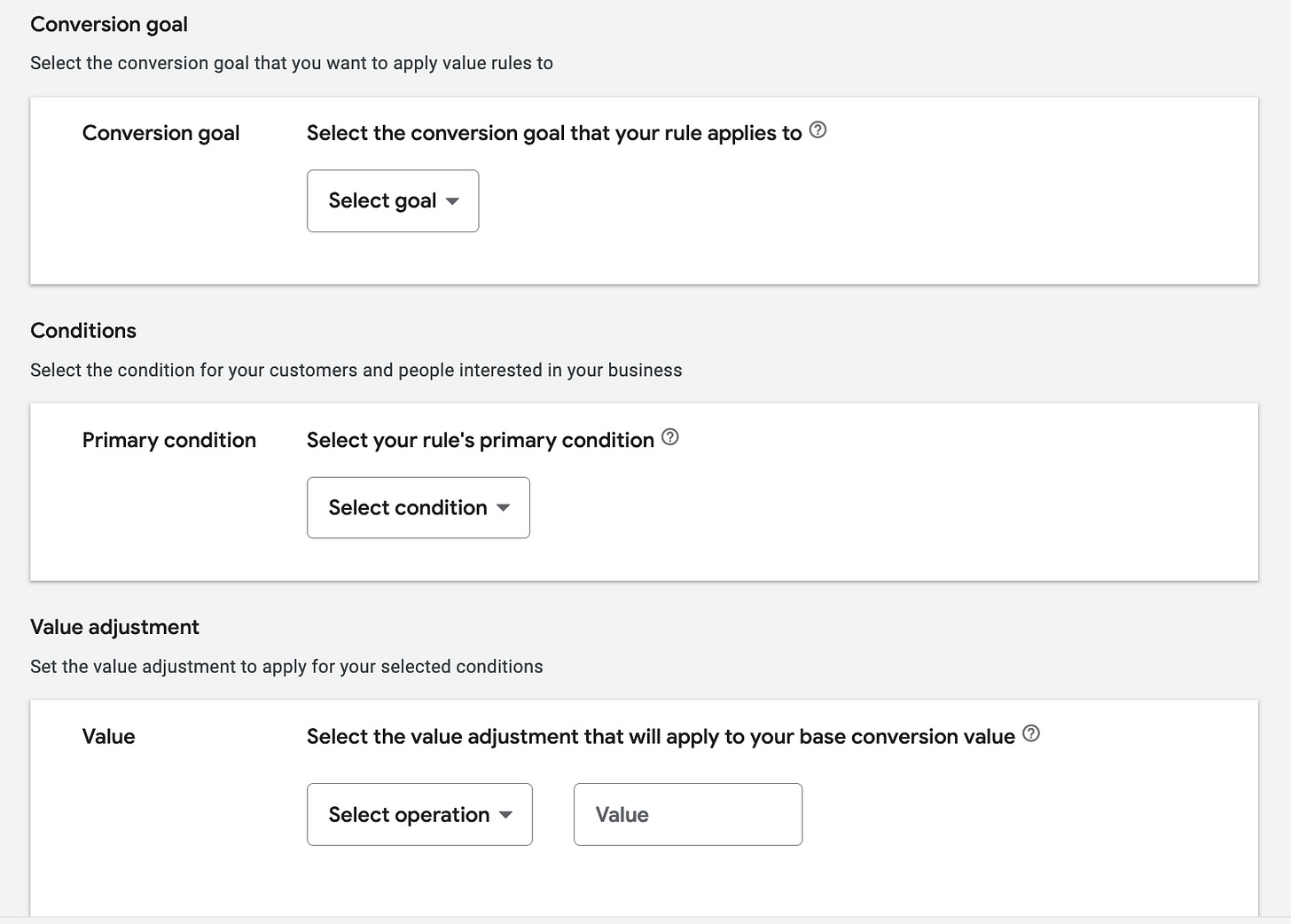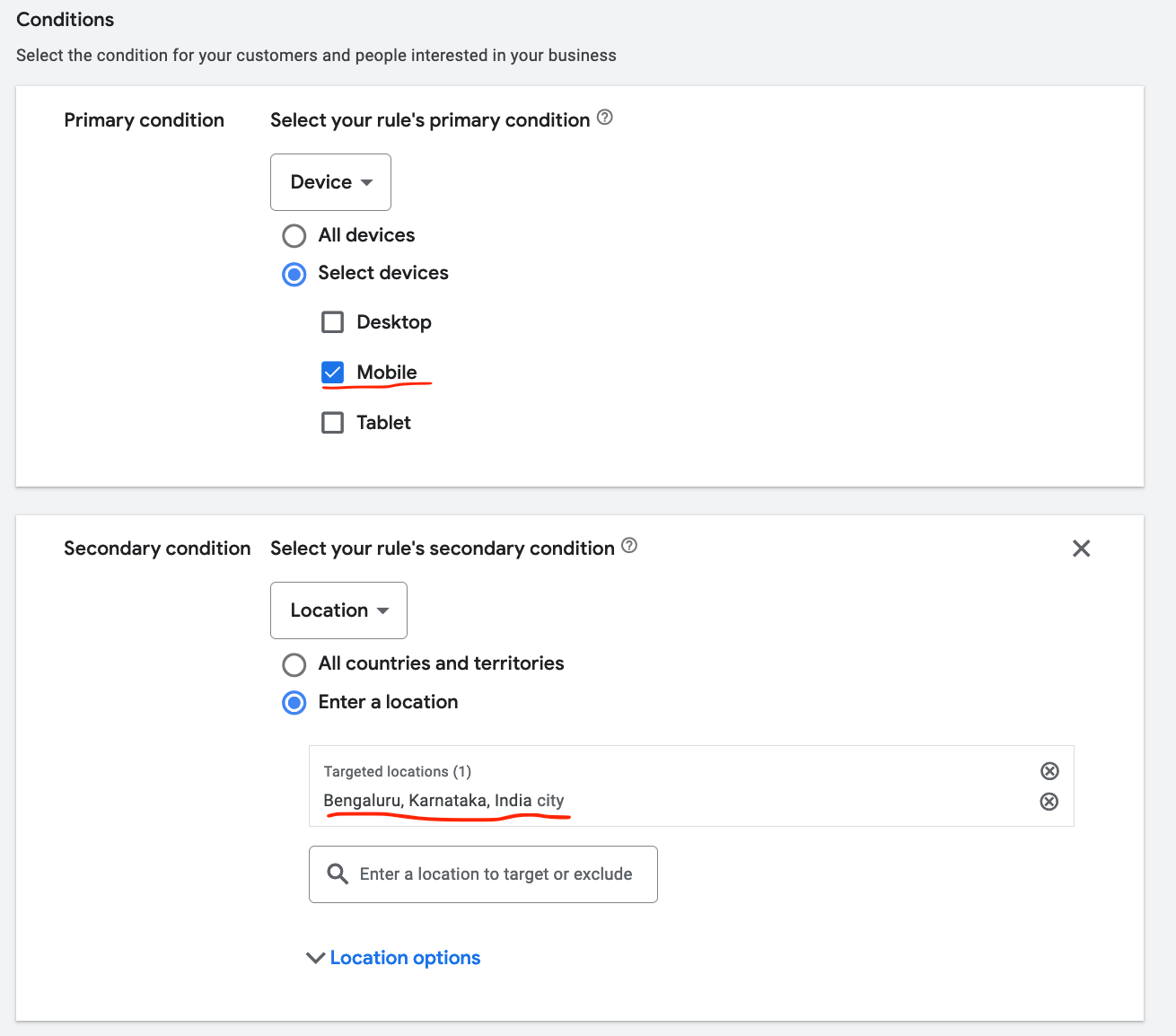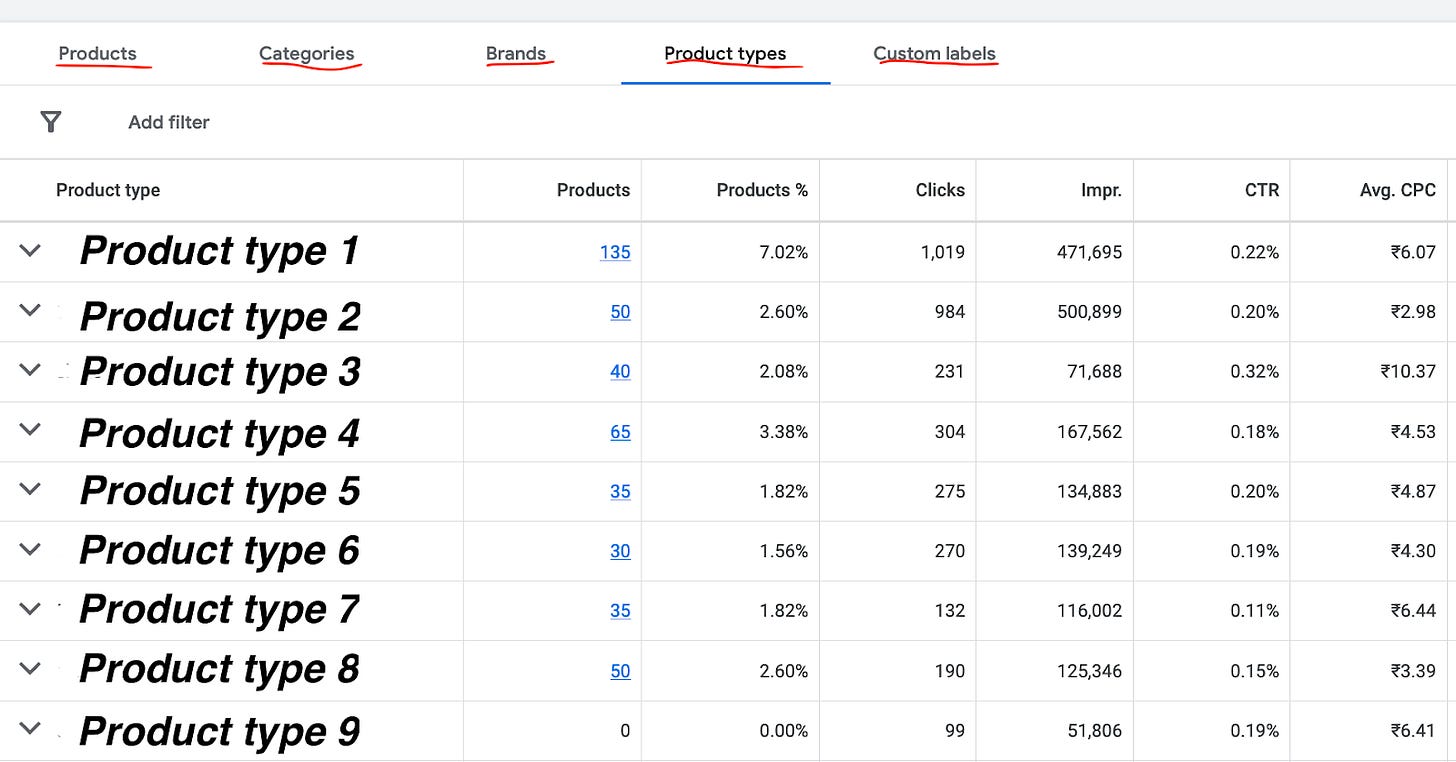4 levers for Performance Max(PMax) campaign Optimization
How to optimize Google PMax campaign to get the desired out put from the campaign.
Are you willing to sacrifice control for better efficiency?
Google Performance Max is a great example of this.
It has many advantages - Wider reach, better efficiency & ROI, but lag two important things.
Control over where and how you show your ads &
Transparency in what is happening with the ads
On the surface level, the PMax campaign may look rigid;
However, there are four ways you can optimize your PMax campaign effectively.
Using Value rule
Using Product feed
Using Keywords negation
Using Brand exclusion
In today's newsletter, let's see all four of them in detail.
1. Value rules
In Search, Display, or YouTube campaigns, you can easily make bid adjustments at device, location, and audience segment levels. However, the Pmax campaign doesn't allow you to make them directly.
However, it is possible, albeit with two constraints.
- The campaign should be in value(ROAS) based bidding
- We can only do a maximum of 50% bid reduction (on the negative side). There is no constant on the bid increase side, however.
We can optimize value rules based on three segments: Device, location, and audience. One good thing about the value rules is that you can cascade two conditions and set a rule, which is not available in other campaign types.
For example. If you want to decrease your bid for a mobile device from Bangalore, you can do it with one value rule, as shown below.
2. Product feed-based optimization
This is the most critical optimization method for e-commerce brands. With the removal of Smart shopping ads, almost all the e-commerce brands use PMAx campaigns for shopping ads.
Here, you can optimize the campaign's performance by removing and adding items in the feed.
This can be done at 5 levels.
1. One individual product level (i.e.) at item ID level
2. Product category level. E.g., Home appliances Vs. Books
3. Product Brand level. E.g., Adidas Vs. Nike
4. Product type level. Basically, the subcategory level in a category. E.g., Running Shoes Vs. Formal shoes
5. Lastly, custom label level - Based on the customer label you put in the feed.
Multiple strategies can be used here: AOV-based, Best-selling items-based, or simply ROAS-based.
You just need to crunch the numbers and decide.
3. Adding negative keywords
This is the most reliable and comparatively more straightforward method. App Marketers have been doing this in the UAC campaign for many years, and it works perfectly.
You get 4 data points at the keywords level in PMax.
Impressions
Clicks
Conversions
Conversion Value
Based on the optimization you want to do, you should create a keyword list and ask your account manager/Google support to get them excluded from the campaign. This way, you can modify the list later too.
4. Brand exclusions.
Google rolled this out a few months back. You can give a meta instruction to the campaign to restrict ads in specific brands.
Originally designed to help brands not bid on their partners and competitors, many brands are using it to remove their brand keyword targeting from PMax.
But we should note that it may not block sub-brands, product collections, or abbreviated versions of your brand name.
If you feel Google knows all your business nuances better than you do, you can skip all these and manage the campaign simply with bids and budget changes.
That way, you get average results.





